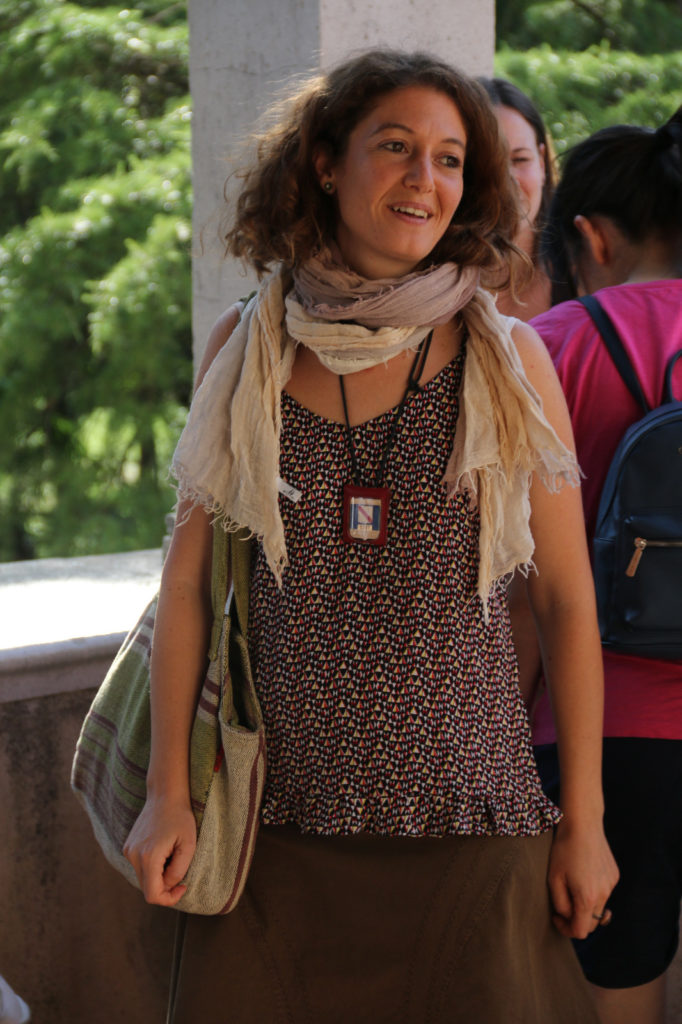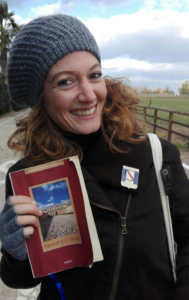
CONTACT ME
 ADDRESSED TO
ADDRESSED TO
> Travel Agencies
> Tour Operators
> Schools
> Universities of Third Age
> Associations
> Families
> Private groups
> Solo travellers
Hello everyone, my name is Viviana Ricciardone. I’m an official Tour Guide for Campania region and for Cilento National Park, Italy.
I was born and reside in Teggiano, my strategical base from which I move to give tours throughout Campania. I graduated in Modern Foreign Languages, English and French, and surprisingly enough, I decided not to follow the teaching career and challenged myself to become a tour guide. After a hard exam I got my licence and now could not imagine myself in any other profession.
Day after day my job is “food for the mind”.
Being a nature lover, I possess a fair knowledge about the naturalistic places I like to share with visitors coming to our beautiful National Park. Also, I have passion for folklore, traditional food and religious rituals. My guided visits will be spiced up with all of this!

ABOUT THE TERRITORY
The Cilento, Vallo di Diano and Alburni National Park is situated in the southern part of Campania region, in the province of Salerno. Established in 1991, it has been designated a World Heritage site by UNESCO in 1998, for its great cultural value.
The three top-landmarks are:
- The Certosa di San Lorenzo in Padula, one of the largest monastery in Europe and splendid example of baroque art;
- The ruins of the ancient Greek city of Elea-Velia;
- The Greek colony of Poseidonia-Paestum and its majestic temples.
In addition to the most important monuments, several minor archaeological sites dot the territory, even on the ocean floor. Therefore, many museums contain numerous evidence from ancient cities and prehistoric settlements. They document human presence ever since prehistoric times.
For what concerns religion, some important Christian shrines are scattered on the crests of the mountains. They are still the goal of pilgrimages, on foot, on the day of the saint’s feast. Besides, in the mountains flanks, where natural caves open, you can find rupestrian churches, showing fascinating frescoes on the rocky walls.
As for the villages, almost all located on hills, still maintain the medieval aspect, namely the remains of the defensive walls, the square, and the two poles (civil and religious): the castle and the church.
The territory is appealing for its naturalistic features as well; the Cilento, Vallo di Diano and Alburni National Park is recognized as a MAB (Man and Biosphere) Reserve by Unesco for its huge bio-diversity. It shows a rich landscape and geomorphology, ranging from the sea to the mountain, from the hill to the river and the plains.
Seasonally, the nature gives its colourful spectacles, such as the lavender flowering on mount Bulgheria or that of wild orchids at the Valley of the Orchids, on mount Cervati. Among the floristic species, it is worth mentioning the Primula palinuri, a rare endemism which has become the Park’s logo. While the geological features include karst phenomena, visible visiting Castelcivita Caves and Pertosa-Auletta Caves, and flysh of Cilento, a typical geological stratification. For the high number of geosites, unique and scientifically valuable, it has also been declared a UNESCO Global Geopark.
Its food and wine products are numerous: from the white dotted fig, eaten dried and stuffed with orange peel, almonds and fennel, to the buffalo’s milk mozzarella, the “sopressata” (cured pork meat), the dried pepper, and an innumerable quantity of edible herbaceous plants.
The use of those herbs, associated with good olive oil, the little meat served on the table and various qualities of cereals, are the basis of the well-known Mediterranean Diet. Only possible diet in the past, trend in the present, Cilento is one of the places recognized by UNESCO as the home of this lifestyle, bringing the UNESCO awards to four!
The isolated nature of some settlements and the distance from the big cities have perhaps contributed to preserving the many traditions, customs and folklore. In synthesis, Cilento man is the result of a long-term interaction and adaptation with its natural environment.
Click on the link below to read the UNESCO description:


